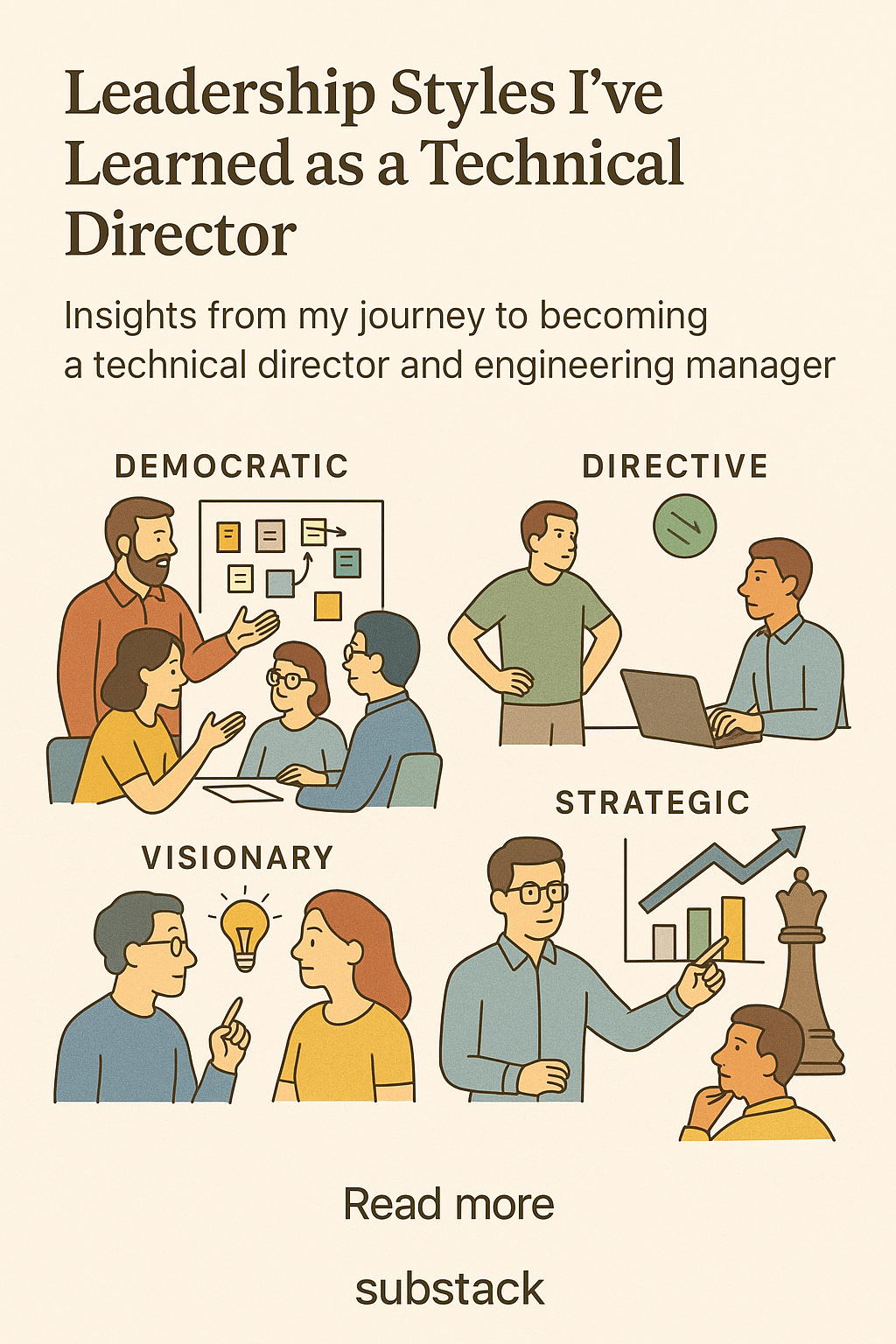4 Types of Leadership That Make You Stand Out as a Candidate
Leadership isn’t a title—it’s a journey. From being led to leading teams, products, and strategy, I’ve experienced four evolving styles of leadership every developer should recognize and grow through.
When people ask me how I learned to lead, I usually pause—not because I don’t know the answer, but because there isn’t just one.
Leadership didn’t arrive for me in a tidy promotion or a well-crafted management book. It showed up disguised—as a sprint retrospective, a failed project, a confusing job title, or a lunchroom conversation. If you’ve worked in software long enough, you’ve probably met these forms of leadership too. You just may not have recognized them at the time.
Here’s how I came to recognize four distinct leadership styles—each marking a chapter in my journey from junior developer to technical director.
🌀 1. Democratic Leadership — The Power of the Scrum Master
My first real experience of leadership wasn’t mine—it belonged to someone else. I was a developer on a team led by a Scrum Master, and they weren’t the loudest voice in the room. They didn’t manage our code. They managed the space.
This was my introduction to democratic leadership: the kind where the leader speaks last, listens most, and helps the team shape its own direction. These Scrum Masters were like glue—facilitators, not commanders. They helped clients understand that software teams aren’t vending machines. They helped developers understand their own voices mattered. And they helped me realize that leadership isn’t always loud. Often, it’s the quietest person in the room holding everything together.
🔥 2. Directive Leadership — The Day No One Was Coming to Save Us
The first time I was given a team, I didn’t realize I was also inheriting a problem. What I thought was a consulting gig turned out to be a full-on delivery engagement—product, people, timeline, all on the line.
The Scrum Master was let go. The client was nervous. And someone had to step up. So I did.

I rewrote the backlog, reprioritized the roadmap, coached the developers, talked to the client daily. I became the Scrum Master, the Product Owner, the Tech Lead, the therapist. And in doing so, I learned a form of leadership that many of us encounter without warning: directive leadership born out of necessity.
The lesson? When no one else is coming to fix it, the job is yours—whether it’s in your title or not. Leadership here wasn’t about titles. It was about ownership. And I learned that ownership, when done right, earns trust faster than any process can.
🧭 3. Visionary Leadership — From Blank Page to Product
Then came a new job. A new kind of leader. And a new lesson: visionary leadership.
My manager didn’t just run projects. They imagined them—out of thin air. They talked to users, found pain, and pitched ideas that turned into revenue-generating products. One of those was a tool to automate a regulatory report that used to live in spreadsheets.
This was the first time I saw leadership not just as reaction or coordination—but as creation. The ability to see something invisible, align people around it, and build it into reality. It taught me that vision is empathy plus execution. And visionary leaders don’t just see the future—they build the conditions for others to see it too.
🧠 4. Strategic Leadership — Building a Team That Builds Teams
At some point, I stopped writing code every day. My job became shaping the environment, not the feature set. As a Technical Director, I started to see the disconnect: developers were isolated, technologies siloed, and nobody quite knew what it meant to be a developer in our organization.

So I did something about it.
I started Lunch and Learns to cross-pollinate knowledge. I encouraged developers to speak at conferences to grow visibility and confidence. I used those talks to recruit. And I built a playbook to help new hires find their place faster. This was strategic leadership—plotting a course and building the ecosystem to get there.
The strategy was simple: if we could become the best place for software talent in the nuclear industry, everything else—delivery, recruiting, retention—would follow. And it started by giving our team a shared narrative about who we were, why we built software, and how we grew together.
Closing Thoughts: You Won’t Be Told You’re Leading—Until You Already Are
Leadership doesn’t begin with a title. It begins the moment you realize that something needs to happen—and you decide to be the one who makes it happen.
You’ll lead long before you’re called a “lead.” You’ll direct without being a “director.” And if you stay long enough, you’ll look back and realize you’ve lived through every style—democratic, directive, visionary, and strategic.
The only question is: what kind of leader are you becoming next?
If you enjoyed this post, consider subscribing to Flying While Building—where we explore the messy, magical middle of software, leadership, and growth.






